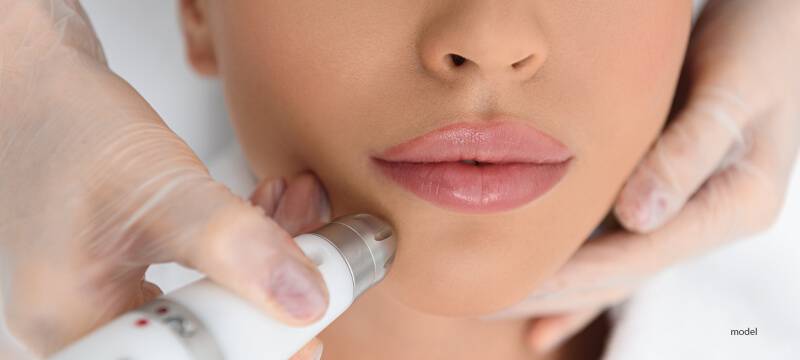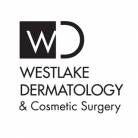Day Spa vs Medical Spa: What’s The Difference?

Sometimes you just need a good spa day! Going to the spa can be a great way to destress while rejuvenating your mind, body, and skin. For many people the difference between a medical spa (aka “med spa” or “medi-spa”) and a traditional day spa is a bit ambiguous. This article explains some of the differences and benefits of each type of spa experience.
Day Spa
Traditional day spas provide personal care treatments focused on improving beauty, health, and relaxation. Common services at day spas include massages, pedicures/manicures, aromatherapy, facials, and mud wraps. Some day spas offer specialized treatments like lava stone massage and reflexology, while others integrate hair salon and makeup services so spa-goers can get a new hair style while they relax.
Day spas are not under the supervision of a medical director, and treatments are not typically performed by medically trained professionals such as nurses or nurse practitioners. Day spa providers of some treatments are certified in the area of their expertise, such as a licensed massage therapist, or they may be trained as a spa tech or aesthetician.
Medical Spa
Med spas are a specialized hybrid between a day spa and a medical skin care clinic. Some may be stand-alone, while others are located within a medical facility. A medical spa typically focuses on providing medical-grade treatments to correct a variety of skin conditions including lines and wrinkles, pigmentation issues, acne, redness, volume loss, and broken capillaries. They are less about relaxation and pampering, and more about providing lasting improvements to the skin.
Popular med spa treatments include:
- Facials (Medical Grade): Facial treatments that can target a variety of different skin ailments including acne, redness, and aging symptoms. Compared to facials offered at a day spa, med spa facials can incorporate extractions and topical products with higher concentrations of active ingredients.
- Chemical Peels: Topically applied formulations that trigger a controlled shedding of the skin to accelerate the growth of new and youthful appearing skin cells. Chemical peels are available in a variety of different types each using different active ingredients (peeling agents) depending on the condition being addressed with treatment.
- Microdermabrasion: A physical exfoliation process that removes the outermost layers of the skin, revealing youthful under layers.
- Skin Lightening: A specialized masque treatment (typically hydroquinone and retinol based) that addresses common pigmentation issues including dark spots, blemishes, melasma, and melanin imperfections. Skin lightening systems can also boost the texture and luminosity of the skin.
- Micro-Needling: Sometimes called Collagen Induction Therapy, Micro-Needling involves the creation of microscopic channels through the surface of the skin, which leads to formation of new tissue and releases the skin’s natural growth factors which promote scar and hyperpigmentation repair and healing. The treatment can be enhanced by adding topical treatments or the patient’s own platelet-rich plasma, which are better able to penetrate deeper into the skin with the channels created by the Micro-Needling.
- Lasers: There are many laser treatment options available to address a variety of concerns, including wrinkles, loss of collagen, texture issues, discoloration and blemishes, and more. Some common laser treatments include Fraxel, photofacial, Laser Hair Removal, and Tattoo Removal.
- Radio Frequency (RF): A device used to impart energy into the deep tissue to provide a tightening effect for face or body. Some commonly used RF devices are Thermage and Ultherapy.
- CoolSculpting: This device offers non-surgical body contouring using cryolipolysis (i.e., it freezes the fat).
- Botox or Dysport: Injectable treatments to address lines and wrinkles.
- Dermal Fillers: Most commonly formulated with hyaluronic acid, dermal fillers help to volumize areas of the face that have hollowed or formed wrinkles due to a loss of collagen. Common fillers include Juvederm, Restylane, and Radiesse.
An important different between medical spas and day spas is that medical spas require professional oversight since treatments offered are powerful and have a risk of negative side effects if they are not performed by a skilled provider. In fact, many states, including Texas, require med spas to be overseen by a specially trained and licensed physician (such as a dermatologist or plastic surgeon) and be staffed by medically trained providers to obtain proper operating licenses. The licensed physician that oversees the medical spa may supervise other providers to actually perform the treatments. These providers are often registered nurses, nurse practitioners, certified physician assistants, or licensed aestheticians.
In Texas (per Texas Medical Board Rule §193.17), a patient who is seeking a non-surgical medical cosmetic procedure, including the injection of medicines (such as Botox or dermal fillers) or the use of an FDA approved device (such as Fraxel, photofacial, or CoolSculpting) must first be evaluated in person by a physician or other provider with prescriptive authority (i.e., Certified Physician Assistant or Nurse Practitioner) before being treated by a registered nurse, aesthetician or other service provider. Regardless of who the physician delegates to perform the procedure, the physician is ultimately responsible for the safety of the patient and all aspects of the procedures offered. [Note that laser hair removal treatments are specifically excluded from this rule.]
In Texas, it is not permitted for patients to be treated with Botox, fillers, or any medical device (excluding laser hair removal) without first meeting with a physician, Certified Physician Assistant, or Nurse Practitioner. Patients are encouraged to report any med-spas performing these treatments without proper supervision to the Texas Medical Board.
Disclaimer: The contents of the Westlake Dermatology website, including text, graphics, and images, are for informational purposes only and are not intended to substitute for direct medical advice from your physician or other qualified professional.

This was very helpful post, thanks for sharing. I’m only interested in a basic facial but I was going to go to a medspa so this really helped clarify! Don’t worry I’m sure I’ll be in for a chem peel some day lol
Wonderful article!! Thanks for clarifying this 🙂
As a licensed esthetician/day spa owner I would like to say that I agree. This is a good description of the differences between a med spa and a day spa. I also tell people that day spas, or solo estheticians, typically offer treatments that are non-invasive. We can do microderms and peels (within our scope). A good esthetician will have a black book of plastic surgeons, derms and injection specialists to refer clients to. I often send clients to Dr. Lisa Rhodes if they need derm treatment. I’ve been to her myself and think she’s a great dermatologist.
Denise Bell
Denise Bell Skin Care
Awesome Denise, thanks so much for all your support and for contributing to this post!!!
–WD Staff
Thank you for detailing the differences between a day spa and a medical spa. I’ve been really curious about which one I should go to get the kind of work I want done. It is good to know that a medical spa has things like chemical peels and microdermabrasion since this is something I’ve been wanting to have done for a while.